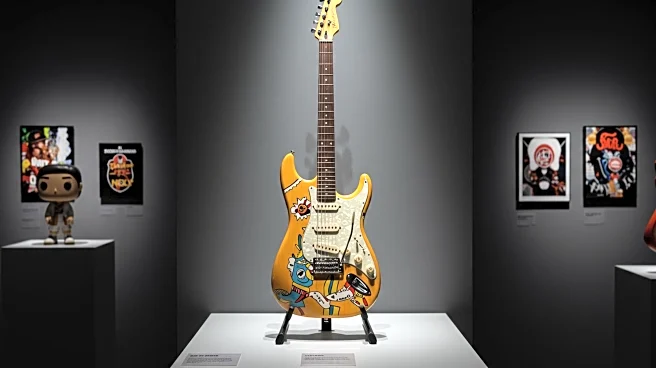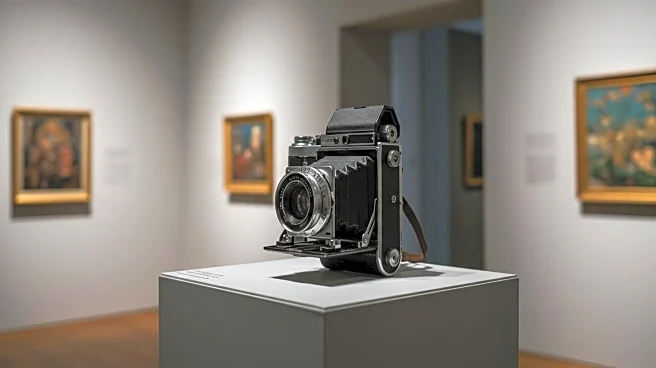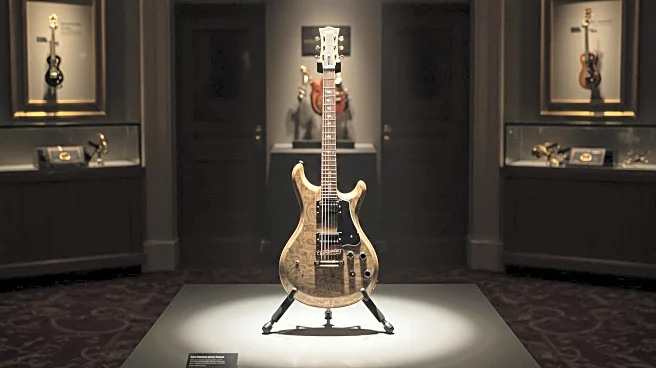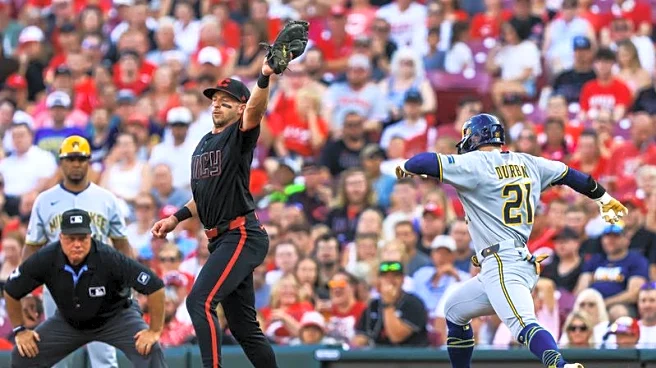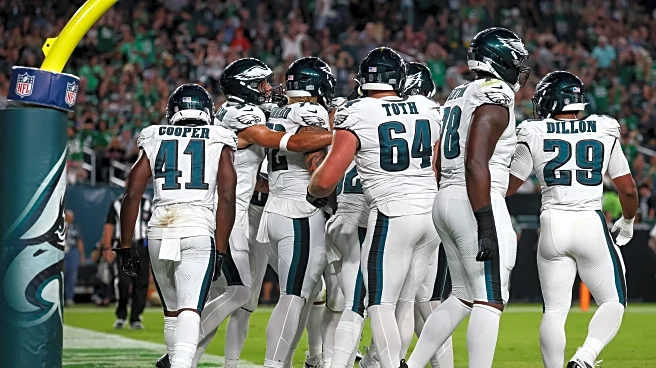What is the story about?
What's Happening?
Sotheby’s is set to auction Eddie Van Halen’s custom-built 1982 Kramer guitar, estimated to sell for $2 million to $3 million. This instrument, known for its distinctive red, black, and white abstract stripes, was used by Van Halen during performances in Philadelphia, Caracas, São Paulo, and Buenos Aires. The guitar, which has not been publicly seen for over 40 years, was later owned by Mötley Crüe’s Mick Mars, who used it to record parts of the band’s 1989 album 'Dr. Feelgood'. The auction is part of Sotheby’s inaugural 'Grails Week' in New York, a new sales series focusing on pop-culture collectibles. This event will also feature other cultural items such as Bob Dylan’s original lyrics for 'Subterranean Homesick Blues' and a Beatles cymbal used in 1960s studio sessions.
Why It's Important?
The auction of Eddie Van Halen’s guitar highlights a strategic shift by Sotheby’s and other major auction houses towards luxury and pop culture collectibles. This move comes in response to a significant decline in fine art sales, which fell by 44 percent in the first half of 2025 compared to the same period in 2022. By focusing on cultural trophies from music, film, and television, Sotheby’s aims to tap into the growing market for unique and iconic items. This strategy has proven successful, as evidenced by the record-setting sale of a Hermès Birkin bag in Paris and a surge in luxury sales at Christie’s. The expansion into pop culture collectibles represents a new revenue stream for auction houses, catering to collectors seeking items with historical and cultural significance.
What's Next?
Sotheby’s 'Grails Week' is expected to further establish the auction house’s presence in the pop culture collectibles market. As the demand for such items grows, Sotheby’s may continue to expand its offerings in this category, potentially leading to more frequent and diverse auctions. The success of this event could encourage other auction houses to follow suit, increasing competition in the market for cultural memorabilia. Collectors and investors will likely keep a close eye on the outcomes of these auctions, as they could influence future trends and valuations in the collectibles market.
Beyond the Headlines
The shift towards pop culture collectibles raises questions about the evolving nature of value and investment in the art world. As traditional fine art sales decline, the emphasis on cultural memorabilia reflects changing consumer interests and the desire for items that offer personal and historical connections. This trend may also impact the way cultural heritage is preserved and valued, as items once considered ephemeral gain recognition as significant artifacts. The ethical implications of commodifying cultural items, particularly those with deep personal or historical significance, may also become a topic of discussion among collectors and cultural institutions.
AI Generated Content
Do you find this article useful?
